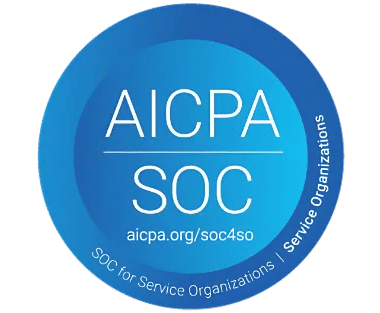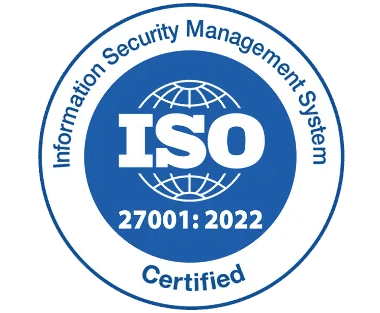Contract Review Process: Essential Guide For Business (2025)
_V5_AbMdKT.png)
The contract review process is not just about minimizing risk it is about enabling smarter decisions, faster contract approvals, and stronger partnerships. When your review process is clear, consistent, and aligned with your business goals, contracts become powerful tools that support growth, ensure compliance, and build long-term value.
By approaching review the right way, you create a foundation for seamless operations and lasting success.
This guide walks you through everything you need to know from the essentials to best practices to help you turn contract review into a strategic advantage for your organization.
What Is Contract Review Process?
The contract review process is a crucial step before any contract is finalized. It involves carefully examining the document to identify potential errors, ensure compliance, and highlight any terms that may need clarification or improvement. The goal is to make sure both parties’ interests are clearly understood and fairly represented.
Although this stage may require a few rounds of revision, it is a valuable part of the process. Taking the time to review a contract thoroughly helps build trust, encourages transparency, and lays the foundation for successful, long-term partnerships.
How to Review Different Types of Contracts
Each type of contract has its unique risk profile and focus areas. Here’s how to approach some of the most common ones.
- Employment Contracts
- Make sure the contract clearly states your salary, benefits like health insurance or bonuses, and the duration and terms of the probation period.
- Review any non-compete and confidentiality clauses to understand restrictions on working with competitors or sharing company information.
- Check the termination terms, including notice period, exit process, and whether the conditions are fair for both employee and employer.
- Vendor/Supplier Agreements
- Along with the main contract, take time to review service-related terms to ensure roles, timelines, and quality standards are clearly defined.
- Look for clear deliverables and transparent renewal terms, so there are no surprises and expectations are aligned.
- Confirm that any clauses related to delays or non-performance include fair and mutually agreed penalties, supporting accountability on both sides.
- NDA (Non-Disclosure Agreements)
- Ensure confidentiality terms apply fairly to both parties, promoting trust and mutual responsibility.
- Clearly define what information is considered confidential to avoid misunderstandings later.
- Agree on practical timeframes for confidentiality obligations, keeping them reasonable and aligned with business needs.
- Lease Agreements
- Clarify who is responsible for maintenance to ensure smooth day-to-day operations and avoid future disputes.
- Understand how and when rent may increase through escalation clauses, so there are no surprises down the line.
- Check if early termination rights are included, offering flexibility in case circumstances change.
Stages of the Contract Review Process
Breaking the process down into logical stages ensures consistency and clarity.
Stage 1: Intake and Understanding
Begin by clearly understanding the purpose of the contract and what it aims to achieve. Identify the key internal stakeholders who should be involved in the review and approval process. It’s also helpful to classify the contract based on its type and assign a priority level, so it can be managed efficiently and aligned with business goals.
Stage 2: Initial Review and Risk Flagging
Take time to read through the entire contract carefully to get a complete understanding of its terms. As you review, highlight any clauses that may seem unclear or carry potential contract risks, so they can be discussed further. It’s also useful to note any non-negotiable terms upfront to help streamline the negotiation process.
Stage 3: Legal & Compliance Check
Ensure the contract language aligns with current legal standards to maintain clarity and enforceability. It’s important to confirm that the agreement complies with all applicable laws, such as data protection, tax regulations, and other relevant legal requirements.
Additionally, check for any industry-specific clauses that should be included to meet standard practices and protect all parties involved.
Stage 4: Internal Alignment
Share the contract with relevant departments like finance, operations, or HR to ensure everyone is aligned.
Make sure that all obligations are clearly understood by the teams involved, helping to avoid any confusion later. It’s also important to clarify any resource or budget commitments to support smooth implementation and execution.
Stage 5: Approval and Signature
Send the contract to the right people inside the company for approval, so everything is clear and well-tracked.
Make sure the correct person is chosen to sign it, following company rules. Using e-signature tools can make the process faster and keep a record of who signed and when.
Stage 6: Storage and Monitoring
Keep all contracts in one central place where they are easy to find when needed. Set reminders for important dates like renewals or renegotiations, so nothing is missed. Regularly check that the terms are being followed and everything is running smoothly. This simple system helps make managing contracts easier and more organized.
Key Terms to Look for During the Review Process
Some clauses may seem straightforward, but they carry significant importance. Understanding them ensures your contract is clear, balanced, and built to support long-term success. Here is a checklist of key terms to review carefully.
- Indemnification: Explains who is responsible if something goes wrong or if there are losses or claims.
- Termination Clause: Outlines how the contract can be ended and under what conditions.
- Jurisdiction: States which region’s laws will apply if any legal matters arise.
- Force Majeure: Defines how private or sensitive information should be protected.
- Payment Terms: Includes details about payment amounts, timelines, methods, and any late fees.
- IP Ownership: Clarifies who owns any work or content created under the contract.
- Warranties and Disclaimers: Establishes defined assurances and outlines the limitations of liability or responsibility.
Understanding and addressing these terms carefully helps build clear, balanced, and enforceable agreements laying the groundwork for long-term trust and successful collaboration.
Common Challenges in the Contract Review Process and How to Address Them
It is a critical part of business operations, ensuring that every agreement is legally sound, strategically aligned, and risk mitigated. However, even experienced professionals and in-house legal teams often encounter roadblocks that slow down the process or introduce risk. Understanding these challenges is the first step toward building a more efficient and reliable contract review system.
1. Time Constraints and Last-Minute Reviews
In fast-paced business environments, contracts are often reviewed under tight deadlines. This time pressure can lead to important details being overlooked.
Legal teams may not have the luxury to thoroughly analyse complex clauses, while business teams may push for quick signoffs to meet project timelines. The result is an increased risk of entering agreements with unclear terms or one-sided obligations.
2. Overly Complex Legal Language
Contracts often include complex legal language that can make it difficult to clearly understand the meaning of key clauses.
When important responsibilities, limitations, or liabilities are hidden in overly technical terms, it can be challenging for non-legal teams to grasp their full impact.
Using clear and straightforward language helps ensure alignment across departments, reduces the chances of confusion, and supports smooth contract execution.
3. Lack of Standardization Across Contracts
Without standardized templates or clearly defined guidelines, every contract review starts from scratch.
This lack of uniformity leads to inconsistent clause structures, longer review cycles, and greater potential for errors. It also makes tracking key terms across contracts more difficult, especially for companies managing hundreds or thousands of agreements.
4. Misalignment Between Departments
Contract terms often impact multiple departments like legal, finance, procurement, operations, and more. Each team may have different objectives. Legal focuses on risk, finance on cost predictability, and operations on service delivery.
Without proper communication and alignment, reviews can become fragmented, resulting in delayed approvals or conflicting interpretations.
5. High Volume of Manual Work
The process of redlining, comparing clauses, managing versions, and storing contracts is often manual and time-consuming.
For organizations handling a large volume of contracts, this leads to inefficiencies and increases the chance of human error. It also consumes valuable time that could be better spent on strategic review and negotiation.
Best Practices for a Smooth Contract Review Process
A great contract review process does not just protect your business it builds stronger relationships, ensures operational clarity, and reinforces your brand’s professionalism. When done right, it becomes an engine of efficiency, not a bottleneck.
Here are best practices that transform agreement review process from a tedious necessity into a strategic asset.
1. Establish and Use Standardized Templates
Why reinvent the wheel for every contract?
Create a library of pre-approved templates tailored to your most common agreements—employment, vendor, service-level, NDAs, and beyond. These templates should reflect your legal posture, brand tone, and operational preferences.
When your teams begin with a well-drafted foundation:
- Review cycles become dramatically shorter
- Risk exposure is minimized from the outset
- Negotiations shift from structure to specifics
With CLM 365, you do not have to start from zero. The platform provides access to a robust set of customizable, pre-approved templates designed to support consistent, compliant, and efficient contracting.
2. Build and Maintain a Robust Clause Library
Establishing a centralized, regularly updated repository of vetted legal clauses is a strategic asset for any organization. Clauses covering critical areas such as indemnity, confidentiality, termination, liability, and others should be pre-approved and readily accessible.
This clause library becomes your internal reference point, promoting consistency across contracts and significantly reducing the time spent on legal review.
By clearly defining which clauses are standard, negotiable, or non-negotiable, the library also empowers non-legal teams to engage more confidently in the contracting process.
3. Enable Non-Legal Teams to Navigate Contracts with Confidence
Contracts are a shared responsibility across departments. Sales finalizes deals, HR issues offer letters, and Procurement handles vendor onboarding. Yet, too often, these teams depend entirely on legal for even minor changes or clarifications.
The better approach is to equip them with the knowledge they need to handle routine contract matters effectively.
Offer concise training sessions or easy-to-follow guides that cover:
• The meaning and purpose of commonly used clauses
• Key risks to be aware of
• Clear guidelines on when to involve legal
This proactive approach not only accelerates the contract lifecycle but also builds confidence, reduces delays, and strengthens cross-functional collaboration.
4. Embrace the Power of System
Managing agreements effectively is about more than just keeping records it is about creating clarity, maintaining momentum, and minimizing risk throughout the lifecycle of a contract.
With the right systems in place, your team can:
• Track edits and approvals in real time
• Set automated reminders for renewals and deadlines
• Detect process delays early and act swiftly
• Use data-driven insights to make informed decisions
These tools are designed to support not replace your team’s expertise. They offer structure, speed, and visibility, helping everyone stay aligned and confident at every step.
5. Foster Real-Time Collaboration Across Teams
Reviewing agreements often brings together voices from different parts of the business legal, finance, operations, and partners on the outside. Without a central space to work together, what should feel simple can quickly become drawn out and confusing.
A shared digital workspace changes everything.
With tools that support live updates, controlled access, and clear conversation threads, teams can review, suggest, and align all in one place. Everyone sees the same content, the same changes, and the same context.
When collaboration is smooth and transparent, progress feels natural. You spend less time chasing clarity and more time moving forward together.
Because when your people can think together, they can act faster and smarter.
Benefits of a Well-Structured Contract Review Process
From onboarding a new vendor to signing a multi-year client engagement, contracts are the quiet powerhouses that shape how businesses move forward. But having a contract is only half the equation. The real advantage lies in how thoroughly and thoughtfully it is reviewed.
Here is how a well-designed contract review process empowers modern businesses to operate at their best.
1) Establishes Crystal Clear Expectations
A proper reviewed removes contract unclear term. Every term is clearly outlined. Every responsibility is defined.
When stakeholders have complete visibility into what is expected of them and what they can expect in return, the result is clarity in contract execution. This builds confidence and harmony between teams and partners.
2) Builds Alignment Across Departments
From legal and finance to procurement and sales, contracts touch every team. A structured review process connects them all. It ensures everyone works from the same set of expectations and contributes to the success of the agreement with full visibility and understanding.
When alignment improves, efficiency follows.
3) Makes Negotiations Smarter
A prepared team is a powerful team. By reviewing contracts early and thoroughly, your team enters negotiations with clarity on what terms are preferred, where flexibility exists, and which values matter most. This preparation leads to faster conversations and better results.
4) Speeds Up the Entire Workflow
In business, speed matters but not at the expense of precision. A streamlined review process delivers both. When you establish a clear, repeatable process for reviewing, routing, and approving contracts, you create momentum.
Teams know their roles. Legal reviews happen at the right time. Finance is looped in when needed. Executives sign off with confidence, not hesitation.
What used to take weeks can now happen in days sometimes even hours.
5) Strengthens Trust with Partners and Clients
A clear, well-reviewed contract reflects professionalism and builds confidence. When agreements are transparent and fair, they show that your business values clarity, respect, and long-term relationships.
Partners feel more secure knowing expectations are clearly outlined. Clients appreciate the commitment to doing things right from the start. This creates stronger bonds, smoother collaborations, and a reputation for being reliable and easy to work with.
Over time, this trust becomes a business advantage leading to repeat partnerships, faster negotiations, and long-term success.
Conclusion
A smooth contract review process isn’t just about risk mitigation. It’s about clarity, speed, professionalism, and respect for everyone involved.
By adopting these best practices, you transform your review process into a competitive advantage—reducing friction, increasing confidence, and setting a high standard for how your business communicates, commits, and collaborates.
Because in business, the best deals don’t come from rushing to sign.
Great results come from taking the time to review, refine, and get every detail right. Ready to streamline your contract review process? Experience a smarter, safer way with CLM 365 start your 14-day free trial today.
Frequently Asked Questions
What is a contract review date?
A contract review date is the specific date scheduled to examine and evaluate the terms, obligations, and performance of a contract. This ensures timely updates, risk assessment, and preparation for renewal, renegotiation, or termination.
What is the contract review and approval process?
The contract review and approval process involves systematically examining a contract’s content to identify legal, financial, and operational risks, followed by securing internal approvals before execution. This typically includes legal review, risk assessment, stakeholder input, revision, and final sign-off by authorized personnel.securing internal approvals before execution. This typically includes legal review, risk assessment, stakeholder input, revision, and final sign-off by authorized personnel.
How to read a contract?
To read a contract effectively:
- Start with the definitions and scope to understand key terms.
- Focus on obligations, deliverables, and timelines.
- Review payment terms, liability clauses, termination conditions, and dispute resolution.
- Pay close attention to fine print, warranties, and limitations.
- If unclear, consult legal counsel before signing.
What is the objective of a contract review?
The primary objective of a contract review is to ensure that the terms are clear, legally sound, and aligned with the organization’s interests. It helps identify potential risks, confirm mutual understanding, and ensure compliance with legal and regulatory standards.
How to review legal documents?
To review legal documents:
- Read thoroughly and identify the purpose of the document.
- Highlight key obligations, rights, and liabilities.
- Verify consistency in language, numbers, and dates.
- Ensure legal terms comply with current laws and policies.
- Check for missing or ambiguous clauses.
- Seek clarification or legal advice when needed.










_svxLrd-8yH.png)

_2VYSFUTN5m.png)

_JiluXJRGNl.svg)

_2djTKNocf.png)





_Rapo0hRMBy.png)










